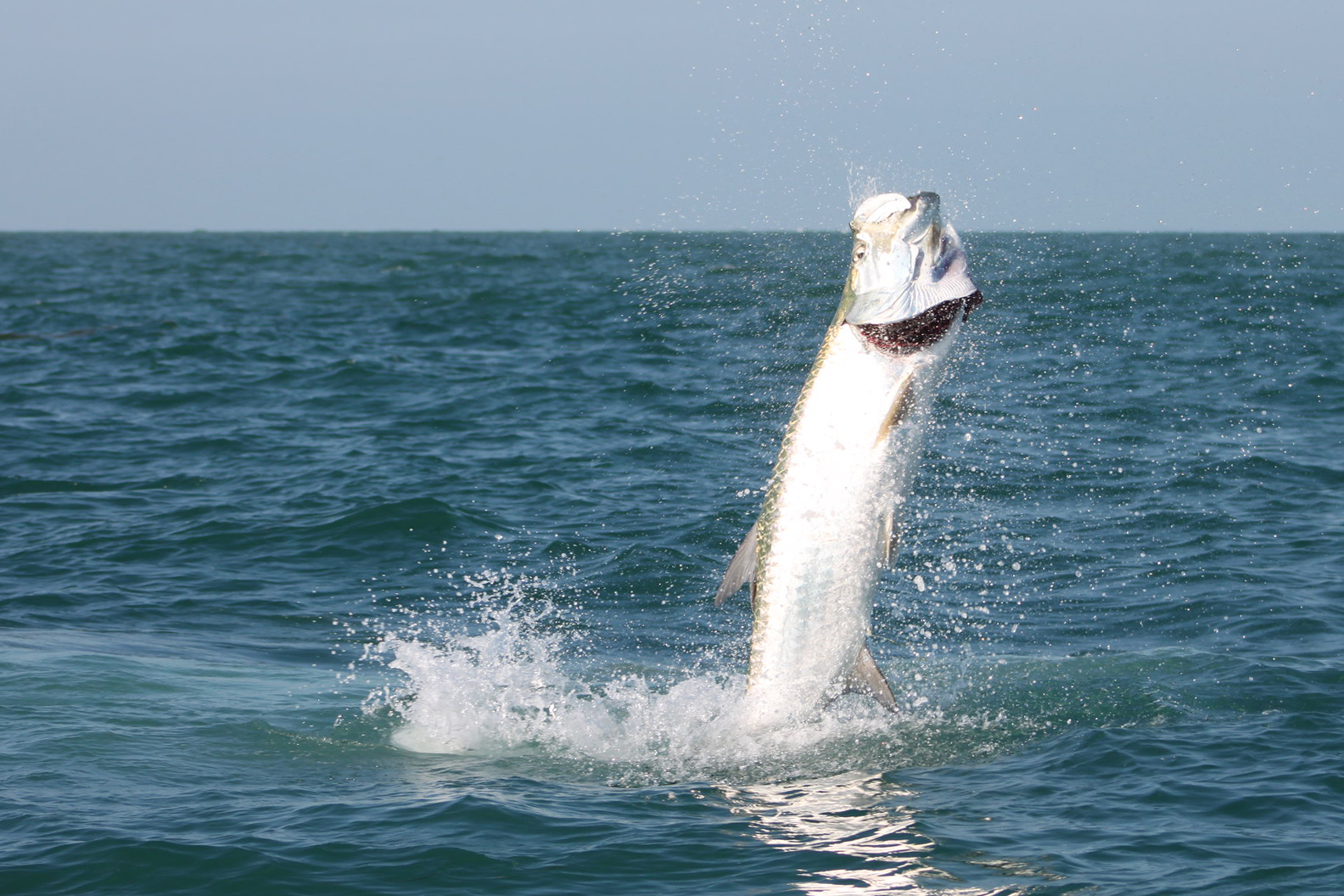When Capt. Tom Weaver took his clients out on Chesapeake Bay on Aug. 1, it was a slick-calm day. They were about 65 miles from the ocean near Hooper Island Lighthouse in Maryland. That’s when he saw what he thought was a giant tarpon.
“I looked about 200 yards away and saw a fish roll at the surface that my brain said was tarpon, but I didn’t know for sure,” says Weaver, who has guided in the Florida Keys every winter for 15 years. He knows tarpon and has caught plenty. “We got closer to the spot, and I saw some big marks on my side scanner sonar that I thought might be cobia.
“We drifted another 10 minutes, getting closer to them. But they weren’t cobia. There were seven or eight big tarpon, all 80 to 100 pounders. They were laid up, holding just under the surface, clearly visible in about 20 feet of water.”
Weaver recorded a couple videos of his encounter on Aug. 1, and it’s easy to see in the video that the fish are large and silver, and obviously tarpon. Although tarpon are notoriously difficult to catch, his clients cast to the fish with large soft plastic jerk baits.
“We got tarpon to turn on a lure twice. It was swirling the lure or bumping it, but not hitting it or getting hooked,” says Weaver, a New Zealand native who has lived in the U.S. for 35 years. “Over about 90 minutes we found tarpon four different times and had five really good shots at fish.”
Weaver says he saw tarpon in Chesapeake Bay last year, but the fish were traveling and difficult to stay on and cast to. This year has been different — and better. The fish seem “happier,” he says, meaning they’re more likely to hold in an area and are more likely to play the game compared to traveling tarpon.
“We have seen tarpon in Maryland’s section of the Bay, but the number of fish spotted recently is unusual,” Maryland Department of Natural Resources’ recreational fisheries outreach coordinator Erik Zlokovitz said in a press release. “This year is the first time we’ve gotten multiple reports of schools of tarpon, and not just stray fish.”

While it may surprise some anglers, tarpon have been documented previously in Chesapeake Bay during summer. Fishermen target tarpon in nearby coastal waters off the Eastern Shore of Virginia, and an established summer tarpon fishery is also available along North Carolina’s Pamlico Sound, not too far south of Chesapeake Bay. Still, it’s rare for anglers to encounter, let alone actually land, tarpon in Maryland waters. (There is no state-record tarpon currently listed in the Maryland DNR record books.)
Zlokovitz said it’s too early to tell if the apparent uptick in tarpon is an “anomaly or the start of a trend.” According to the DNR, many warm-water species like Florida pompano, cobia, cutlassfish, and pompano dolphinfish are becoming more common in the Bay and the Atlantic coast. Warming waters could be drawing tarpon farther north, says the DNR, or the fish could could be traveling farther in pursuit of food sources like menhaden and shrimp. It could also simply be that fishermen are seeing a larger northern migration this year. A surfcaster in Rhode Island caught a tarpon this summer.
When you run out of Annapolis though, you don’t expect an hour and a half later to be running across a tarpon, says Weaver, who operates the Fish With Weaver guide service. According to the Florida Fish and Wildlife Commission, which manages the U.S.’s most prominent tarpon fishery, tarpon range from Virginia to central Brazil in the western Atlantic, along the coast of Africa in the eastern Atlantic, and all through the Gulf of Mexico and Caribbean Sea.
Read Next: The Best Saltwater Rods, Tested and Reviewed
“At least two other Bay guides I know have seen big tarpon this year in the Chesapeake near where I’m fishing,” Weaver told Outdoor Life while he was fishing for redfish on Monday morning. “Today we have the right lures, heavier tackle, and crab and shrimp flies. We’re all set, and ready for another chance at catching a tarpon.”

